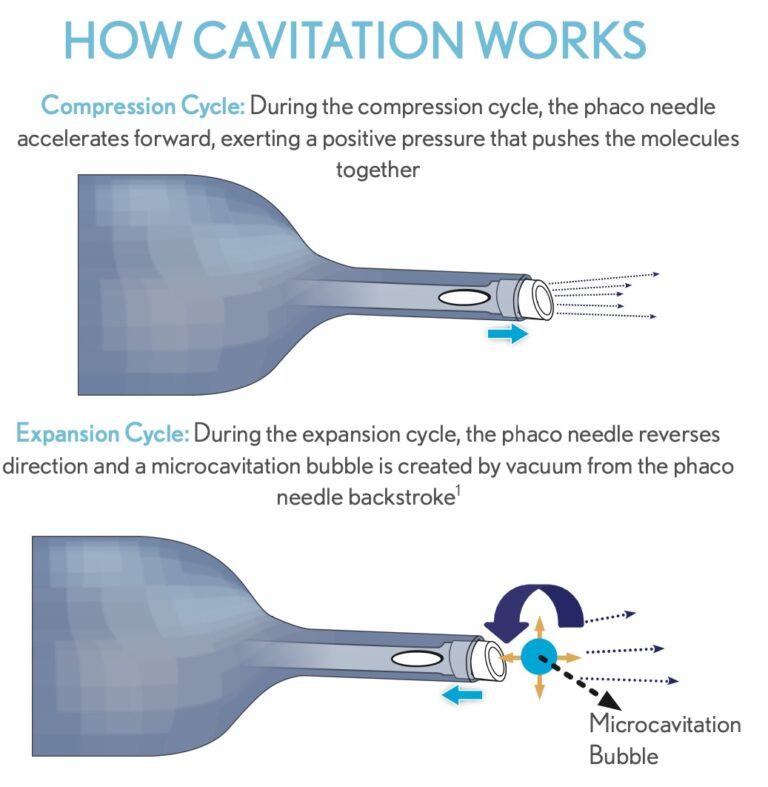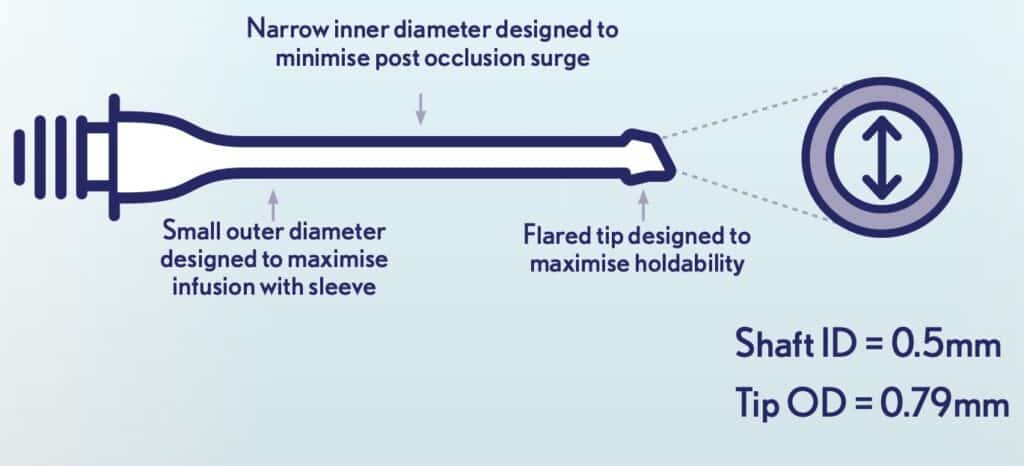The Stellaris EliteTM platform offers a wide range of needle sizes and phaco tips in different configurations, straight or curved. Combined with Attune® Energy technology for emulsification management, surgeons can benefit from optimized cutting for all stages of cataract.
Attune® Energy for efficient cutting 🔪
Attune® Energy phacoemulsification technology is based on:
- a phaco handpiece with six crystals and a low frequency of 28.5 kHz
- Longitudinal cavitation of up to 142 microns (depending on the ultrasound power used).
- A unique handpiece design combining mechanical cutting and acoustic cavitation for focused energy at the needle tip.
- Setting options for continuous, pulsed, fixed-pulse, multi-burst, and waveform ultrasound.
Cavitation of 142 micron lenght :
This acoustic cavitation is the result of the high-speed expansion, compression, and implosion of microcavitation bubbles in the phaco tip. When these bubbles implode, they release considerable energy and shock waves directed towards the lens. What’s more, the 142-micron longitudinal cut of the Attune® Energy is designed to optimize cavitation production.

A 28.5 kHz frequency:
The low-frequency handpiece (28.5 kHz) facilitates the formation of larger microcavitation bubbles and is less likely to generate heat. The size of the microcavitation bubble increases the energy released when it implodes, for more effective cutting power.
The 28.5 kHz Attune® Energy low-frequency handpiece is therefore designed to facilitate the formation of microcavitation bubbles and generate less frictional heat than higher-frequency handpieces, for efficient cataract emulsification (1).
A wide range of needles and phaco are available for a variety of choices depending on the procedure. MICSTM phaco needles are designed to offer unique advantages :

(1) Seibel, B.S. (2005). Phacodynamics Mastering the Tools and Techniques of Phacoemulsification Surgery. Slack Incorporated. Fourth Edition.

